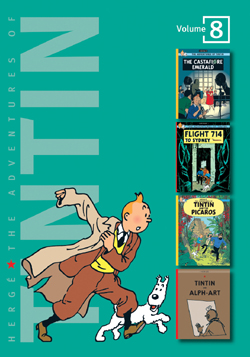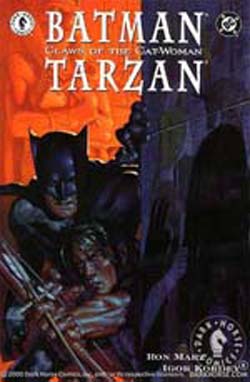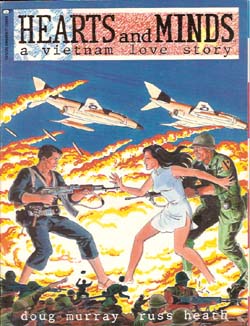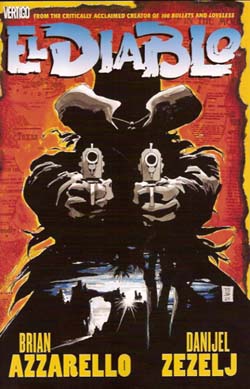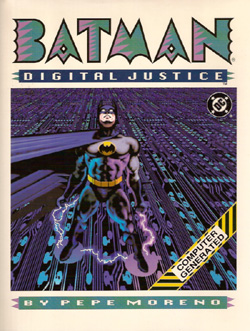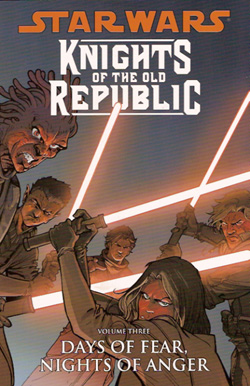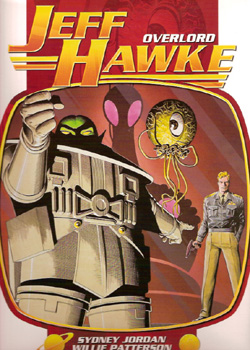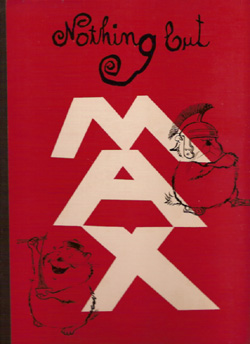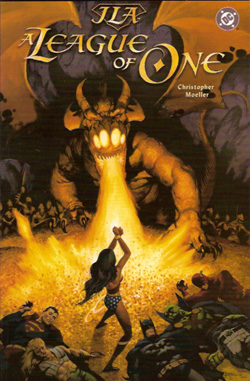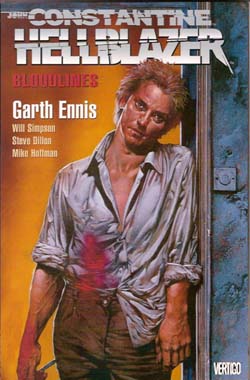
By Garth Ennis, William Simpson & various (Vertigo)
ISBN13: 978-1-84576-650-4
This volume collects the stories written by Garth Ennis following the landmark Hellblazer: Dangerous Habits (ISBN: 1-56389-150-6) and shows two sides to the urban wizard and ultimate anti-hero. As well as the jaded world-weary supernatural veteran, he shows a softer side. Whilst recovering from the demon-cured lung cancer that nearly killed him Constantine returns to his London haunts, and against all better judgements allows himself to fall in love with the formidable Irish lass Kit Ryan.
The first tale (originally printed in issues #47-48 of the monthly comicbook) is illustrated by William Simpson, Mike Hoffman and Stan Woch. ‘The Pub Where I Was Born’ and ‘Love Kills’ finds him a spectator to grisly spectral vengeance when his local pub is burned down; a traditional ghost story well told and a necessary prelude to the excellent Christmas offering ‘Lord of the Dance’. Drawn by Steve Dillon, this uncharacteristically joyous tale of Pagan Good Fellowship is a highpoint of the series and serves to whet the appetite for the controversial horror-fest that follows.
‘Remarkable Lives’ from issue #50, and illustrated by Simpson, sees the immortal King of Vampires attempt to suborn and intimidate Constantine. As usual the Hellblazer leaves intact with another immensely powerful creature furious, ashamed and determined to destroy him.
‘Royal Blood’ comes from issues #52-55, wherein Constantine takes on the entire English Establishment. When a prominent member of the Royal Family (well his ears certainly are) becomes the latest host-body for the cannibalistic demon that once possessed Jack the Ripper, all the assets of the ruling classes are called into play to fix the problem and avoid a scandal. John Constantine is no lackey of Privilege though, and his solutions are a double-edged sword. This scandalous, horrific and deeply satisfying shocker makes for a deliciously dark and powerfully political satire that completely reaffirms the character’s anti-establishment credentials.
The volume concludes with the opening shot in a long running battle between Constantine and the new ruler of Hell, The First of the Fallen. When he was dying of cancer, Constantine saved himself by selling his soul to three rival Lords of Hell. Since none would give way to the others, the only way to avoid Infernal War was to keep the wizard alive and jockey for later advantage. Constantine knew that eventually his time would be up and spent some time devising ways to cheat the Devils.
‘Guys and Dolls’ (issues #59-61, illustrated by Simpson, Mike Barreiro and Kim DeMulder) tells the tragic story of the succubus Chantinelle whose heretical affair with an Angel gives Constantine an opportunity to be a hero, spit in the faces of both Heaven and Hell and most importantly, bank a favour that will be of unprecedented value when his ultimate battle finally comes…
Hellblazer is a superb series about flawed heroism and desperate necessity, with a tragic everyman anti-hero compelled to do the right thing no matter what the cost, arrayed against the worst that the world can offer. It’s also the best horror drama in comics and worthy of your devoted attention.
© 1991, 1992, 1993, 2007 DC Comics. All Rights Reserved.

